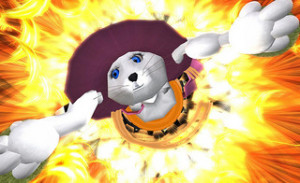
Small but mighty — just like a small business.
The small business definition by the government isn’t simple. It has changed over the years. It changes by agency or federal program. Sometimes a small business is defined as a “mouse”. Really!
Your small business definition is probably very different. If you are one, you may be surprised at who else is included.
Small business wasn’t small until Eisenhower said so
Until the creation of the Small Business Administration (SBA) in 1953 by President Eisenhower with the signing of the Small Business Act, there was no difference. A business was a business and some were smaller than others. The beginning of a small business definition starts here.
How the SBA Office of Advocacy defines small business is a matter of history
In the 1970’s, during another economic downturn, those who looked at the economy saw that there was a group of businesses doing better than others and creating jobs. The federal SBA Office of Advocacy was born at that time to identify, track, report, and make recommendations to government agencies on how to keep this momentum going.
Those little job furnaces it turned out were the smallest of small businesses. The small business definition changed. Those businesses are defined today by most states as “micro” businesses, firms with less than 20 employees.
The small business definition was changed to referring to business with 20-99 employees. We also got the definition of a medium business (100-499 employees), and a large business remained 500 employees and up.
Most small businesses in the US are under 20 employees. According to the SBA Office of Advocacy, the only businesses adding new jobs are under 5 employees; everyone else has been shedding jobs for the last four years.
Federal programs define small businesses as types of animals
In certain federal programs, the SBDC for instance, the smallest of businesses have been designated in testimony before the Texas legislature as “Mice”. It was explained at that hearing that this referred to their ability to gather in the crumbs left by other businesses and make something of them.
They also defined small businesses that are or have the potential for rapid growth as “Gazelles”. The largest of small businesses were defined as “Elephants”. Venture capitalists, angel investors and other funding sources also use the “G” word when defining their preferences in funding small businesses.
How small business is defined affects your business in many ways
The federal government has it’s own combination of small business definitions. It uses them, somewhat indiscriminately, to measure the lending performance of banks, give out grants, choose vendors, etc. The main definition that is used is that small businesses have less than 500 employees and are independently owned.
There’s been a grudging concession that this is not the definition when it comes to employment law. If you’ve ever wondered why some laws don’t apply to businesses under 15, 25, or 50 employees, there is a recognition that somehow these are different. The other federal definition is used is that the firm is the smallest in its NAICS code. That would make Daimler/Chrysler a small business.
Before you vote, make sure the candidate you select uses what you consider to be the correct definition and has legislation in mind that reflects the real state of small business. See if he or she endorses the use of a proper process to determine a real “small business impact statement”, a way legislation can be analyzed to see the implications of regulation on business before it’s voted on.
Then make sure you vote. Early if you want but for sure on November 6.






Leave a Reply
You must be logged in to post a comment.